The complete abstracts for the 2017 International Conference can now be read here
Conference Abstracts
Chris Roe: 'The Scientific Study of Mediumship'
SPR Council member Prof. Chris Roe gave a talk at the recent Parapsychological Association convention in Athens on 'The Scientific Study of Mediumship'. The video of his presentation can be found here:
Divine Intervention, by Raymond J H Spencer
Divine Intervention, by Raymond J H Spencer
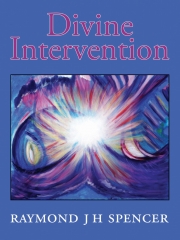
From the author: This book is set in 5 parts and the author goes into detail about the many and varied psychic experiences and his interaction with spirits over a 20 year period:
Part One: provides details of the author’s early life in New Zealand, and details Raymond’s experience of being shot in the side of the head at Raurimu in February 1997 and the massacre of six others. As a result of this, the author’s life underwent a dramatic spiritual change.
Parts Two and Three: provide details of more than 300 psychic experiences occurring over the period from February 1997 to March 2013, most of which were varied and provided by spirits for him to write about.
Part Four: analyses these experiences and considers them more from the point of view of the life of our spirit self and that of spririts. These are also studied in association with the findings from research in the psychic field, and the operation of the brain.
Part Five: provides details on our spiritual rights in contrast to the rights which humans presently have – being associated more with out material needs. it provides details on where mankind fits into life elsewhere in the greater universe, and how we need to change the path we are on in order to ensure our survival, and out ultimate place in the next realm.
Divine Intervention, by Raymond J H Spencer
The first thing to say about this self-published book is – it’s massive, clocking in at over 900 pages, and physically heavy with it. It is a remarkable achievement, detailing Raymond Spencer’s numerous psychic experiences over many years and studying them in depth. The first part is autobiographical, charting Spencer’s life from childhood in his native New Zealand, his relationship with his family, and his career. He trained as an engineer, but underpinning this practical side to his life he was aware from an early age that there was a dimension beyond the mundane. At the age of 15 he had an extreme out-of-body-experience during a bout of tonsillitis, following which he became conscious he had guardian spirits whose role was to help him as part of a larger plan. This portion of his life culminated in his presence at a spree shooting in and around a ski lodge at Raurimu on New Zealand’s North Island in February 1997 resulting in six fatalities. Spencer himself was shot in the side of the head and his wife also injured. The account of the massacre is grippingly written and the dread those involved felt as the murders took place is palpable.
After this traumatic event, from which it took him a long time to recover, Spencer became interested in Spiritualism and spiritual development, immersing himself in the literature and exploring his psychic side, and Divine Intervention is the fruit. The bulk of the text comprises a dissection of these explorations, recounting and analysing over 300 psychic experiences reproduced from extensive diary entries (tabulated and coded in an appendix), looking at them both from a human and from a spiritual perspective. They include astral travel, dream visions, telepathy, clairvoyance, clairaudience and clairsentience, channelling, spirit-produced sensations, pre- and retrocognition, apparitions, visions, materialisation and dematerialisation, the synchronisation of human and spirit energy systems, and more. The book was written with the assistance, and the firm encouragement, of his spirit friends.
He categorises his experiences and shows how they fit into a larger view of the structure containing this world and the higher planes we experience after bodily death, together forming a unified whole obeying the overarching laws of the universe. The final section opens out the discussion, examining the woeful state of the world. Spencer calls for a fresh approach that goes beyond the established religions in assisting our progress through the planes of existence, stressing that knowledge, rather than faith alone, is key. Finding harmony between the levels would facilitate the preservation of life on earth, something for which the participation of higher beings is essential. In this sense Spencer is combining metaphysics with a practical manual for living.
So this is an impressive project, laying bare one individual’s psychic and spiritual life in forensic detail and using it to expound universal principles. Support for Spencer’s thesis is marshalled utilising a broad range of supporting examples from the Spiritualist and psychical research literature (he has been a member of the SPR since 2003). His claim is that most people reading the volume will find their spiritual lives strengthened, overcoming negativity emanating from both spirits and humans who hold us back, for the ultimate benefit of all mankind. One has to ask, however, how many people will stick with it over the course of its 900 pages, and it hardly needs saying that sceptics will find nothing here to convert them. The degree of detail is obsessive, and while it is well written, anyone other than the most committed reader may come to feel it is self-indulgent. Spencer considers that in time its contents will be believed by everybody, but such a belief could prove over-optimistic. In short, Divine Intervention will probably fail to find an extensive readership despite the importance of the author’s mission and the sincerity with which he pursues it.
Homo Sovieticus: Brain Waves, Mind Control, and Telepathic Destiny, by Wladimir Velminski
Homo Sovieticus: Brain Waves, Mind Control, and Telepathic Destiny, by Wladimir Velminski
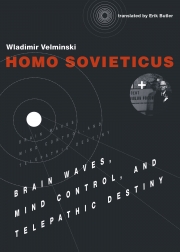
William James Psychical Research and the Challenge of Modernity, by Krister Dylan Knapp
William James Psychical Research and the Challenge of Modernity, by Krister Dylan Knapp
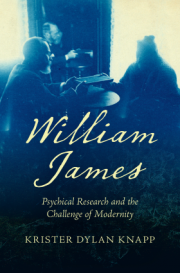
In this insightful new book on the remarkable William James, the American psychologist and philosopher, Krister Dylan Knapp provides the first deeply historical and acutely analytical account of James's psychical research. While showing that James always maintained a critical stance toward claims of paranormal phenomena like spiritualism, Knapp uses new sources to argue that psychical research held a strikingly central position in James’s life. It was crucial to his familial and professional relationships, the fashioning of his unique intellectual disposition, and the shaping of his core doctrines, especially the will-to-believe, empiricism, fideism, and theories of the subliminal consciousness and immortality.
Knapp explains how and why James found in psychical research a way to rethink the well-trodden approaches to classic Euro-American religious thought, typified by the oppositional categories of natural vs. supernatural and normal vs. paranormal. He demonstrates how James eschewed these choices and instead developed a tertiary synthesis of them, an approach Knapp terms tertium quid, the third way. Situating James's psychical research in relation to the rise of experimental psychology and Protestantism’s changing place in fin de siècle America, Knapp asserts that the third way illustrated a much broader trend in transatlantic thought as it struggled to navigate the uncertainties and religious adventurism of the modern age.
Arthur Balfour's Ghosts: An Edwardian Elite and the Riddle of the Cross-Correspondence Automatic Writings, by Trevor Hamilton
Arthur Balfour's Ghosts: An Edwardian Elite and the Riddle of the Cross-Correspondence Automatic Writings, by Trevor Hamilton
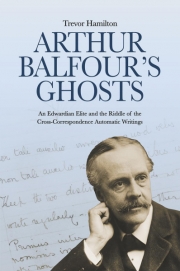
From the publisher's website: "This book tells the incredible story of the cross-correspondence automatic writings, described by one leading scholar of the field, Alan Gauld, 'as undoubtedly the most extensive, the most complex and the most puzzling of all ostensible attempts by deceased persons to manifest purpose, and in so doing to fulfil their overriding purpose of proving their survival'. It is an intensely personal and passionate story on so many levels: May Lyttelton trying to convince her lover Arthur Balfour of her continued existence; Frederic Myers with indomitable persistence trying to produce evidence to prove survival generally; Edmund Gurney and Francis Balfour striving from beyond the grave to influence the birth of children who would work for world peace; Gerald Balfour and his lover Winifred Coombe-Tennant believing that their child, Henry, would be the Messianic leader of this group of children."
Further information about the book can be found on Imprint Academic's website:
http://books.imprint.co.uk/book/?gcoi=71157100349240
Trevor Hamilton has produced an entry on the cross-correspondences in the SPR's online Psi Encyclopedia:
https://psi-encyclopedia.spr.ac.uk/articles/cross-correspondences
Angelos Tanagras – My Memoirs: A Collection of Short Stories, by Fotini Pallikari
Angelos Tanagras – My Memoirs: A Collection of Short Stories, by Fotini Pallikari
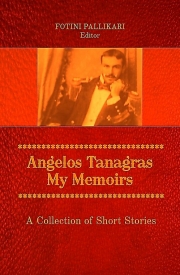
From Dr. Pallikari’s website: The present volume contains 23 articles based on the memoirs of Dr. Angelos Tanagras, edited, annotated and translated from the original Greek into English by Fotini Pallikari. They describe the life, work and personality of Tanagras: his childhood, when he was serving as adoctor in the Greek Royal Navy, and later when he established and ran the Greek Society of Psychical Research.
These selected stories aim to offer a valuable source of information on the cultural heritage not only of Greece, but also of those countries Tanagras visited or just interacted with during the time from the late 19th and up to the middle 20th century. The material presented here should be of interest to historians, psychologists, parapsychologists and humanities scholars.
Further information can be found on Dr. Pallikari's website:
http://users.uoa.gr/~fpallik/tanagras.htm
and on her Linkedin page:
Paranormal Encounters on Britain's Roads: Phantom Figures, UFOs and Missing Time, by Peter A McCue
Paranormal Encounters on Britain's Roads: Phantom Figures, UFOs and Missing Time, by Peter A McCue
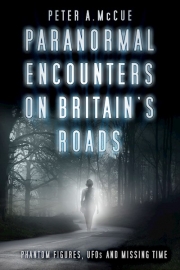
From the publisher's website: In this detailed book, Dr Peter McCue reflects on the enormous range of paranormal phenomena to have been reported along Britain’s roads, and examines the theory that certain areas seem to be hotspots for such occurrences, such as the A75 and B721 roads in southern Scotland, and the Blue Bell Hill area in Kent. He delves into the sightings of apparitional vehicles; encounters with ‘colliding apparitions’; ‘phantom hitch-hikers’; out-of-place big cats; phantom black dogs; UFOs; ‘missing time’ (strange memory gaps); vehicle interferences (such as mysterious breakdowns); and incidents in which drivers and passengers seem to have been translocated in space or time. This thorough book debates the evidence and theories in a critical but open-minded way, and is a welcome addition to the genre.
https://www.thehistorypress.co.uk/publication/paranormal-encounters-on-britains-roads/9780750984386/
Science of the Seance: Transnational Networks and Gendered Bodies in the Study of Psychic Phenomena, 1918-40, by Beth A Robertson
Science of the Seance: Transnational Networks and Gendered Bodies in the Study of Psychic Phenomena, 1918-40, by Beth A Robertson
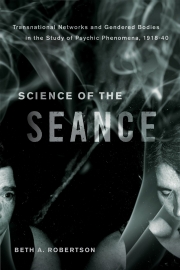
From the publisher's website: In the 1920s and ’30s, people gathered in darkened rooms to explore the paranormal through seances. Science of the Seance resurrects the story of a select transnational group and their quest for objective knowledge of the supernatural world, casting new light on empiricism and its relationship to gender, sexuality, and the body in this era.
Drawing on publications, correspondence, seance notes, and photographs from Canada, the UK, and the US, Beth A. Robertson draws back the curtain to reveal a world inhabited by researchers, spirits, and spiritual mediums, including the notorious Mina “Margery” Crandon. Representing themselves as masters of the senses, untainted by the effeminized subjectivity of the body, psychical researchers believed that machines and empirical methods could transform the seance from an isolated spiritual encounter into a transnational empirical project. The laboratory of the spirits that they created, however, opened up a space where mediums and ghostly subjects could and did challenge their claims to exclusive scientific expertise and authority.
This innovative reassessment of paranormal investigation and the transatlantic ties of the seance reveals how science, metaphysics, and the senses collided to inform gendered norms in the interwar era.
This book will be of interest to historians of science, medicine, and religion and technology, as well as feminist scholars and cultural theorists.
The Survival of the Soul and its Evolution after Death, by Pierre-Émile Cornillier
The Survival of the Soul and its Evolution after Death, by Pierre-Émile Cornillier

Change of date for lecture on William James
Poltergeists, by Alan Gauld and A D Cornell, reissued
Alan Gauld is a long-standing senior member of the SPR, as was the late Tony Cornell.
Details of the new edition of Poltergeists can be found on the White Crow Books website:
http://whitecrowbooks.com/books/page/poltergeists/
Here is Dr Gauld's page on the SPR website:
Review on SPR website translated into Spanish
The review on the SPR website of The Survival of the Soul and its Evolution after Death, by Pierre-Émile Cornillier, has been translated into Spanish.
The original review is here:
https://www.spr.ac.uk/book-review/survival-soul-and-its-evolution-after-death-pierre-mile-cornillier
The translation, on the SurvivalAfterDeath | CienciasPsíquicas blog, is here:
http://survivalafterdeath.blogspot.co.uk/2018/03/la-supervivencia-del-alma-revision-tom.html
Real Magic: Ancient Wisdom, Modern Science, and a Guide to the Secret Power of the Universe, by Dean Radin
Professor Dean Radin, Chief Scientist at the Institute of Noetic Sciences (IONS), is one of the world's best-known parapsychologists. He has now been active in the field for about forty years. Radin has long urged his readers to subvert the dominant paradigm, that is, materialism. With what one wonders? Real Magic provide an answer. Have you ever heard the expression “be careful what you wish for” - according to Radin this is sound advice because psi, hence magic too, are very real and consciousness is fundamental to reality.
If humanity has any chance of maturing beyond its barely controlled adolescence, we're going to need a much better understanding of what consciousness is, and what it-and by association all of us-are really capable of.
The evidence, summarized in his previous popular books The Conscious Universe, Entangled Minds, and Supernormal, suggests that telepathy, clairvoyance, precognition etc. are real. Radin thinks the evidence is in, and although we might disagree about how to interpret it parapsychology does not remain controversial due to a lack of evidence: “The simple truth is that people believe what they want to believe.”
In the Western world psi is associated with entertainment, mentalists that pretend to read thoughts, dubious seers that spout vague statements, and horror movies. Psi is also regarded as heretical, that is, one should not dabble with it. Psi is associated with witchcraft and as sceptics like to highlight due to belief in witchcraft people still suffer grave consequences if they are believed to be witches. Psychics in the Western world are more likely to “just” be regarded as fraudulent or deluded.
Nevertheless, as Radin points out, truth be told, reality might be strange too. The stories about Daniel Dunglas Home, St. Joseph of Copertino, and Ted Owens suggests that at least some people are capable of a lot more than just correctly guessing which ESP card a computer will display. The US government certainly regarded psi as real and long supported a classified program, now best-known as Star Gate. People were employed to use their psi ability to spy on the Soviet Union during the cold war.
Radin outlines the results of some of his own studies, one involving testing an idea that underlies voodoo (!), others involve blessed chocolate and tea. The reader also gets to know a bit about what the data gathered through the website Got Psi? shows. Radin clearly outlines the experimental procedures for laymen and explains what the results mean.
Still many will remain unconvinced, perhaps they cannot even be persuaded by any data. Why is that? It has to do with worldviews, yet it has become increasingly clear that our thoughts really do matter. In addition, both physicists and philosophers have come to regard consciousness as fundamental to reality. Nevertheless, this is not enough for sceptics to calm down and Radin shares a few experiences about the effects the taboo of psi has had. Parapsychology and psi are however not as controversial everywhere.
Radin has accepted that psi is a real phenomenon and has turned to esotericism in search of clues about how to best proceed with the research. Parapsychologists usually shy away from associating psi with magic, partly because other scientists tend to regard belief in magic as some kind of popular delusion. Radin is however not afraid and his overview is well-written.
Besides being about parapsychology, controversy, and esotericism Real Magic also to a large extent deals with philosophy of mind and Radin attempts to explain what kind of reality we are really living in. Although, the possible negative effects of psi being real are not adequately discussed by Radin. However, perhaps fortunately:
… for magic to work reliably under conscious control requires both steadfast practice and natural talent. Practice can be managed with persistence. Talent - you either have it or you don't.
Regardless of whether you have it or not, to many reading Real Magic will be an enjoyable and thought-provoking experience. Be careful what you wish for you might get it.
Preserving the Psychic Child, by Ingo Swann
Preserving the Psychic Child, by Ingo Swann

The psychic child is one who is sensitive to nonphysical phenomena, energies and influences. The psychic child is sensitive to emotions and thoughts and to many other invisible happenings in the world around the child. The child's psychic nature is innate – born with the child, already functioning in a raw and preverbal form. To some degree, we have all been psychic children.
Review by Athena A, Drewes.
Researching the Paranormal, by Courtney M. Block
Researching the Paranormal, by Courtney M. Block

From the publisher's website: The paranormal has long been a hotly contested topic, especially in academia. Most people are entertained by the paranormal or casually read a few books they come across on the topic, perhaps assuming that these topics are nothing more than campfire fodder. Of course, there’s nothing wrong with being entertained by the paranormal, but how many people know that there is a long history of academic, scientific, and credible research into topics such as extrasensory perception, hauntings, poltergeists, cryptozoological sightings, near-death experiences, and more?
Further information at the publisher's website: Rowman & Littlefield.
Ethel Post Parrish: Mediumship in America, by Gerald O'Hara
Ethel Post Parrish: Mediumship in America, by Gerald O'Hara
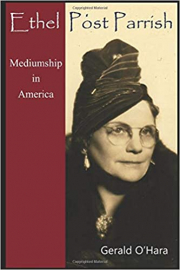
From the back cover: Ethel Post Parrish led a roller-coaster life, of police raids, undercover journalists, accusations of fraud, court cases over leases, and legacies. Four-times married. Ethel was a perfectionist who expected a high standard, earned respect, and was accepted in the best Spiritualist circles. An enterprising, business-like woman and founder of Camp Silver Belle. The Camp witnessed a Golden Age of American mediumship. Arthur Ford, Frank Decker, Clifford Bias, Maina Tafe, and Lula Taber; Ethel knew and employed them all at Silver Belle.America’s most versatile psychic. Ethel Post Parrish has waited since 1958 for a biography worthy of her stature. America’s leading medium of the 1930/50s. Much admired, envied, and ridiculed in her lifetime, Ethel’s sensational materialization seances featured spirits of different sexes, ages, races, and cultures. With numerous spirits visible in ruby light, Ethel’s famous Indian guide Silver Belle presided over the séances with a “tinkling laugh.” Ethel Post Parrish: Mediumship in America, breaks new ground in 20th Century US Spiritualist studies. The first of a series of books planned in this subject area. American Spiritualism witnessed tremendous expansion between the wars, and this book illustrates and quantifies that growth. The only account of America’s premier influential medium is set in the movement in which lived and shaped. Tough, loving, loyal Ethel had charisma. A uniquely talented medium and above all, a remarkably successful woman.
2nd hand book sale - list has been updated
To purchase SECONDHAND BOOKS (UK sales only): CLICK HERE.
Call for Papers and Submissions for the 45th International Annual Conference of the Society for Psychical Research 9th – 11th September 2022
The 45th International Annual Conference of the Society for Psychical Research
Celebrating 140 years of the SPR
9th – 11th September 2022
Programme Chairpersons:
Callum Cooper and Adrian Parker
This year’s Annual Conference will be online via Zoom, and the main theme will be Post-Mortem Consciousness. Submissions concerning other areas of psychical research will also be considered. Abstracts in standard journal form (max. 300 words) should be submitted by email to the address below.
The deadline for submissions is 20th June 2022
Please email submissions to conference@spr.ac.uk










